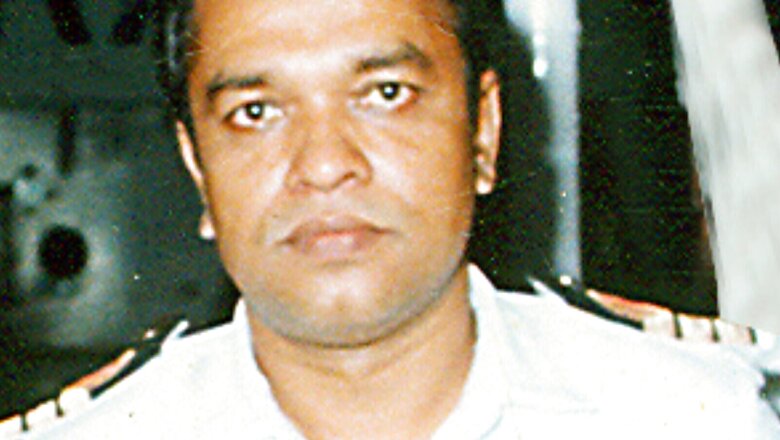
views
Naval veteran Commander SK Mishra from Indore gets nostalgic every year on Navy Day, which is observed on December 4. On this day, back in 1971, the Indian Navy launched the historic ‘Operation Trident’ when Indian missile boats attacked Karachi harbour and paralysed the Pakistani navy. These attacks stopped ships in West Pakistan from entering the seas, such was the fear generated by the Indian naval attack.
“This year is special as it marks the golden jubilee of these history making events that culminated in the liberation of Bangladesh on December 16, 1971,” said Commander Mishra, going back in time to when he was a young lieutenant, commissioned in 1969 and posted on INS Mysore, the flagship cruiser of the western naval fleet. The flag officer commanding the western fleet, Rear Admiral EC Kuruvilla, was also on this ship captained by Captain RKS Ghandhi.
According to Commander Mishra, “Our western fleet sailed from Bombay harbour on December 2. We were fully prepared for war. When war was declared on December 3, we headed towards Karachi, and Operation Trident was on. Karachi-born Admiral SM Nanda, the then navy chief, and his commanders had planned the attack on Karachi harbour well in advance.”
The Indian Navy had acquired Vidyut class/Soviet Osa missile boats from Russia (then USSR) in 1971. This was part of Admiral Nanda’s aggressive modernisation drive when the UK had refused to sell warships to India. Three of these boats — INS Nipat, INS Nirghat and INS Veer — were part of the attacking force. Each of them had four Soviet-made radar-guided Styx surface-to-surface missiles, with a range of 74 km (40 nautical miles).
As part of Operation Trident, these three missile boats were towed till they were 250 nautical miles from Karachi harbour. On the night of December 4, they attacked Karachi harbour and sank three ships. These included a Pakistani destroyer PNS Khaibar, whose captain thought they had been hit by a missile fired by an Indian aircraft and started firing its anti-aircraft guns. As many as 222 Pakistani sailors went down with the ship.
The missile boats also destroyed a cargo vessel Venus Challenger, which was carrying ammunition, and damaged its escort ship PNS Shah Jahan beyond repair. A minesweeper, PNS Muhafiz, was also destroyed and sunk, leading to the death of 33 sailors. Oil storage tanks at Karachi harbour were also set ablaze and destroyed.
“We didn’t suffer any casualty or damage,” said Commander Mishra with pride. “It was one of the most successful naval operations anywhere in the world and the first time that anti-ship missiles were used in this region. Vice Admiral SN Kohli, flag officer commanding-in-chief western command, was very happy when he received the code word for success, angaar, as a radio message.”
Commander Mishra said the Pakistani air force retaliated by bombarding Okha naval base and caused damage to infrastructure and an ammunition dump, but they could not damage any naval vessels as the Indian Navy had anticipated the attack. On December 8, Operation Python was conducted under which oil storage tanks at Karachi harbour were attacked again in a devastating blow to Pakistan and its navy, which was forced to call in all its ships into Karachi.
He added that in a panic, the Pakistani air force attacked its own ship, PNS Zulfiqar, and caused extensive damage and casualties.
Commander Mishra said morale on board the Indian ships was high. “We slept whenever we got little gaps between our watchkeeping duties and action stations, in which the entire crew would be manning their duty stations or be on standby with action gear.”
He added that a Pakistani cargo vessel named ‘Madhumati’ tried to hoodwink the Indian fleet by changing its name to ‘Adamant Manila’, but when its crew heard the guns of INS Mysore they decided not to try and escape. The ship was captured and brought back to Bombay.
He said, “As the INS Mysore was built in 1939, it was not up to date against submarine attacks even though it was a tough and robust ship. It had served in the Royal Navy as HMS Nigeria during World War II. We were all very nervous one day when news went around that a submarine had been sighted. But luckily it turned out to be a false alarm and we returned safely. However, we did lose INS Khukri to a torpedo attack by submarine PNS Hangor on December 9. This is, to date, the only ship lost by the Indian Navy in battle.”
Thus, the Indian Navy became the master of the Arabian Sea and even merchant ships were terrified to go towards Karachi. This naval blockade of Pakistan was one of the reasons that the war came to an end in just 13 days and Bangladesh was liberated.
After the war, Commander Mishra continued his career in the Indian Navy and was sent on study leave to Cambridge University, UK, for postgraduate studies in controls and systems. In 1982, he was awarded a letter of commendation by the flag officer commanding-in-chief western naval command for professional competence and ability to plan and guide work displayed by him in the successful commissioning of the Orion control test facilities at the naval dockyard in Bombay without any assistance from specialists from abroad.
After retiring from the navy, Commander Mishra has settled in Indore where he is enjoying his life as a veteran and has friends from all the three services.
(As told to guest writer DK Vasudevan)
Read all the Latest India News here




















Comments
0 comment